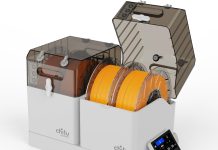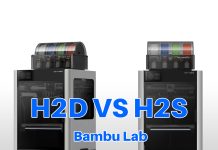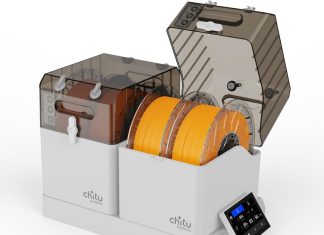The Anycubic M7 Pro is an outstanding resin 3D printer known for its high precision and reliability, making it a favorite among hobbyists and professionals alike. To achieve optimal print quality and efficiency, understanding how to configure and optimize the resin profiles is crucial. This article provides essential tips for getting the most out of your Anycubic M7 Pro, focusing on resin profile optimization.
Understanding Resin Profiles
A resin profile is a set of parameters that dictate how your 3D printer processes resin during the printing process. These parameters include exposure time, lift speed, off time, and retraction settings. Properly tuning these settings can significantly improve print quality, speed, and overall success.
1. Choose the Right Resin
Before diving into the specifics of the M7 Pro’s settings, it’s essential to start with a high-quality resin. Different resins have various properties, such as viscosity, curing speed, and flexibility. Anycubic offers a range of resins tailored for specific applications, from standard prints to tough and flexible options. Always consult the manufacturer’s datasheet for recommended exposure settings to use as a starting point.
2. Perfect Your Exposure Settings
Base Exposure Time
Base exposure refers to the first layer of resin that adheres to the build plate. For the M7 Pro, a good starting point is usually around 30-50 seconds. This time may vary based on the specific resin you’re using, so it’s critical to perform test prints to find the optimal base exposure time.
Normal Exposure Time
After the first layer, the printer will manage the rest. For subsequent layers, start with a normal exposure time between 8 to 12 seconds. Again, this will vary by resin type, so keep track of your prints and adjust as necessary based on layer adhesion and surface detail.
Off Time
The off time is the duration that the light source remains off between exposures. A setting of 1 to 2 seconds is generally effective for most resins. However, longer off times can help prevent layer adhesion issues, especially with detailed prints.
3. Fine-Tune the Lift Speed and Distance
Lift Speed
The speed at which the build plate lifts affects both print quality and time. A slower lift speed (around 3-5 mm/s) can help reduce the chances of print failure by allowing the resin to flow adequately back into the print area, minimizing suction forces that could damage layers.
Lift Distance
Set the lift distance to around 6-8 mm per layer. This distance helps ensure that each layer has enough space to cure fully without excessive lifting pressure that could lead to print failures.
4. Support Structures
When printing intricate designs, effective support structures are crucial. Utilize the slicer’s support generation tool to add supports where necessary, particularly in overhanging regions. Ensure supports are robust enough to hold the weight but thin enough to minimize damage to the final surface.
5. Post-Processing Techniques
After printing, proper post-processing is vital to ensure the best results. Rinse your print thoroughly in isopropyl alcohol (IPA) to remove uncured resin. Then, cure the print under UV light for the manufacturer-recommended time to ensure full hardening of the resin.
6. Experiment and Adjust
Every resin reacts differently, even within the same brand. Keep a log of your settings for each type of resin and print. Documenting your experiments will help you refine your process over time, leading to consistently high-quality prints.
7. Keep Your Printer Maintained
Regular maintenance of your Anycubic M7 Pro is key to long-term performance. Keep the build plate leveled, clean the resin vat after each print, and check for any damaged components. A well-maintained printer is less likely to encounter unexpected issues during the printing process.
Conclusion
Optimizing your prints on the Anycubic M7 Pro is essential for achieving the best results, and understanding resin profiles is a critical aspect of this process. By selecting the right resin, fine-tuning exposure settings, adjusting lift speeds, and focusing on post-processing, you can enhance your 3D printing experience. Experimentation and regular maintenance will also go a long way in helping you create stunning resin prints with your M7 Pro. Embrace the process, and you’ll soon be producing extraordinary models that showcase the capabilities of this fantastic printer. Happy printing!






